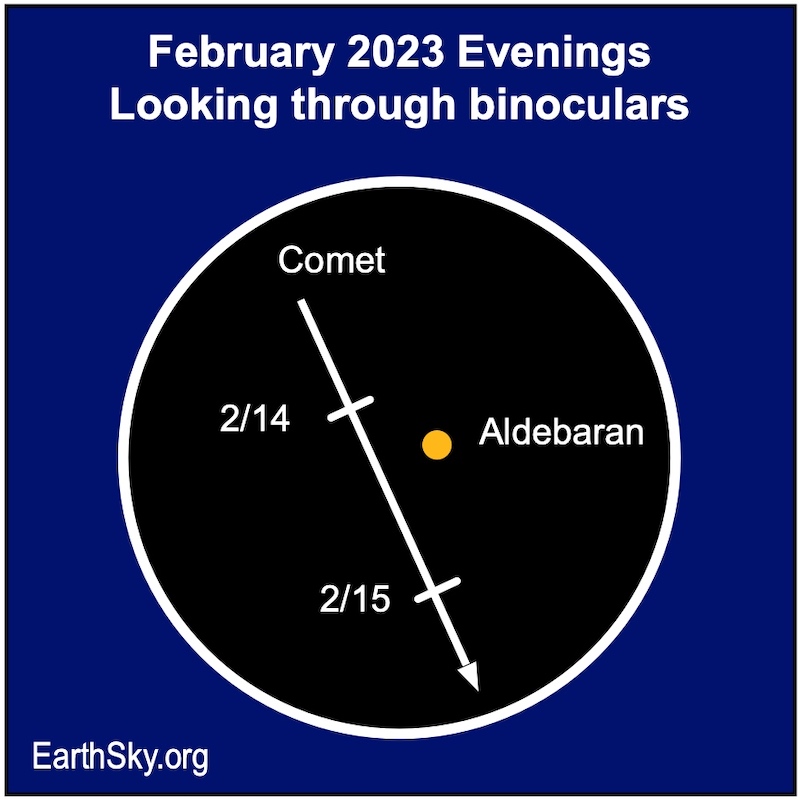
Show your sweetie the green comet
Okay, it’s not bright. And you’ll need a little patience and a dark-sky site to see it. Plus you’ll need binoculars, at least. But the comet is in a good place to try to see on this Valentine’s Day, 2023. Tonight and tomorrow night, those using optical aid can spot the green comet (C/2022 E3 ZTF) near the orange star Aldebaran, in the constellation Taurus the Bull. The green comet is dimming as it speeds out of the inner solar system. Catch it before it’s gone.
Astrophotographers can point a camera toward its approximate location in the sky and take long-exposure photos of 20 to 30 seconds. Your images might reveal a fuzzy, tailed object. Indeed, using this technique, many have been able to photograph a comet even if they can’t see it visually. Did you get a photo of Aldebaran and the comet? You can submit it to our EarthSky Community Photo page!
Current estimates of the comet’s brightness show that it should be shining around magnitude 6.5 by mid-February. That’s beyond the limit of visibility to the unaided eye. If you want to see it with your own eyes, you’ll need binoculars, or a small telescope, and a dark-sky site.
The moon will rise after midnight local time on February 14, leaving a small window for viewing. Be aware that the comet sets around 1 a.m. local time (the time on your clock, no matter where you are on the globe).
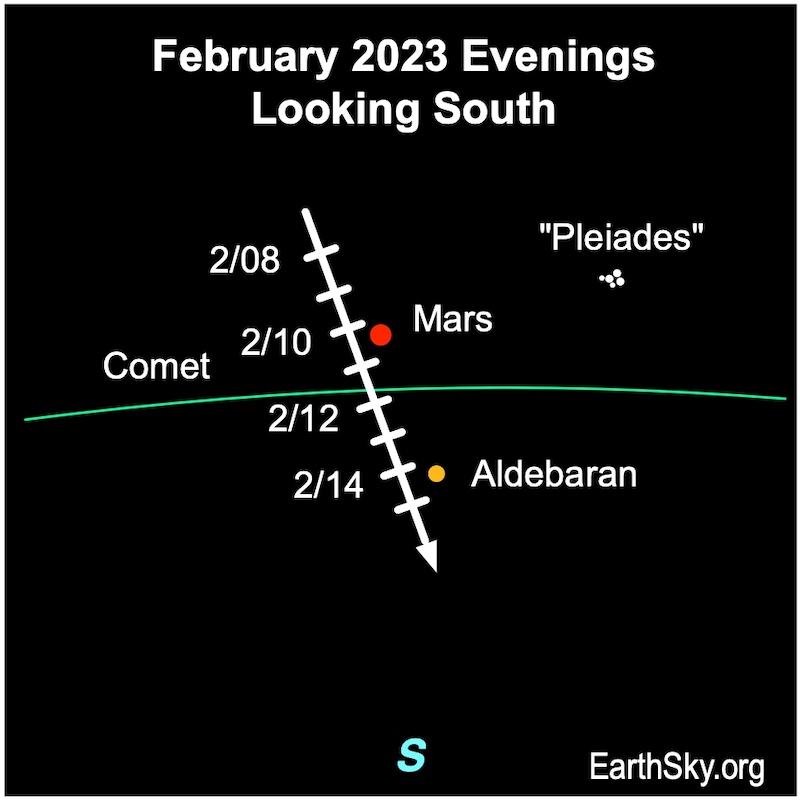
How to see the comet
Use the star charts here to track down the comet. Its northern location on our sky’s dome means Southern Hemisphere stargazers don’t have a good view of this comet. For them, the body of Earth will block it from view. Be sure to check Stellarium for a precise view from your location, at the time you want to watch.
The comet is dimming as it leaves the solar system, but observers are still picking it out with binoculars. Look for a faint smudge. It won’t be a bright point, like a star. Instead, it will look like a spot that is just a bit lighter gray than the surrounding background of space. It can help to use averted vision to spot it.
Comet C/2022 E3 map for February
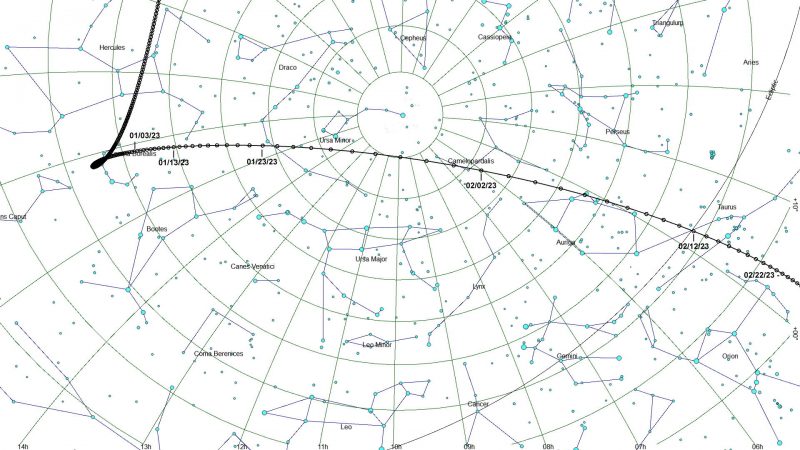
The comet was closest to Earth on February 1 and 2
On February 1 and 2, 2023, Comet C/2022 E3 (ZTF) reached its closest point to Earth. That’s when it passed 27 million miles away (that’s 44 million km, or 0.29 AU). At that point, it was still more than 100 times the moon’s distance away.
The last time this comet passed near the sun was 50,000 years ago, when Neanderthals walked the Earth. Now, as the comet returns to the outer solar system, we can enjoy what could be the brightest comet of 2023 before it gets too dim to see.
And don’t miss the photo gallery of the comet at the end of this post. Plus you’ll find more images of the comet here.
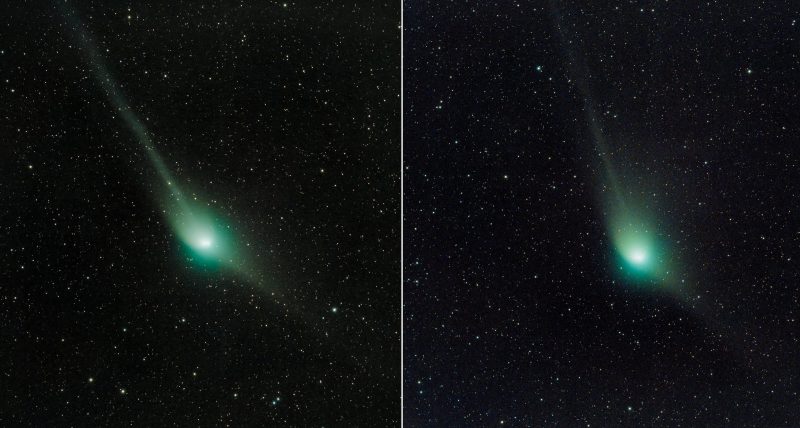
Good geometry
Comet C/2022 E3 (ZTF) has favorable geometry with respect to Earth. Normally, a comet will pass near the sun’s vicinity, and the elongation, which is the angle in degrees between the sun and the comet as seen from Earth, grows small and the comet disappears in the sun’s glare for a few weeks. Not this one, though! In contrast, it stays in the dark sky for most of its trip through the inner solar system.
Moreover, the tilt of the orbit relative to our path around the sun is steep and retrograde, meaning the comet goes around the sun in the opposite direction than do the planets. As a result, this means it will, at some point, move quickly through our sky.
To begin with, the comet entered our solar system from the north, and on February 12, 2023, passes to the south of our orbital plane.
Northern Hemisphere observers will have a view of the comet until the end of April 2023, when the comet, then a telescopic object, will disappear into the evening twilight.
Southern Hemisphere observers, however, lost their view of the comet in early October 2022. It disappeared into evening twilight as it rapidly headed northward. Subsequently, their next view of the comet will come in early February 2023, when it pops above their northern horizon.
Green comet photos and videos: Editors’ picks
How Comet C/2022 E3 (ZTF) got its name
Astronomers discovered Comet C/2022 E3 (ZTF) using the 48-inch (1.2-meter) Samuel Oschin robotic telescope, part of the Zwicky Transient Facility (ZTF), located at Mt. Palomar in southern California. They discovered it on March 2, 2022, and it was the third such object discovered in the fifth half-month (A, B, C, D, E) of the year. Thus, 2022 E3 (ZTF).
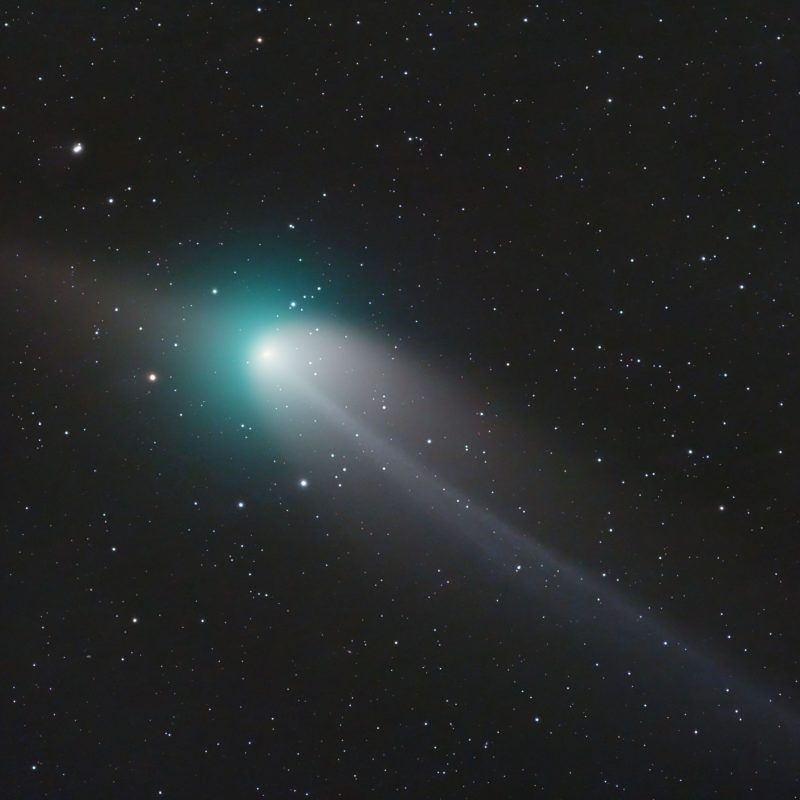
The discovery story
Comet C/2022 E3 (ZTF) was in the morning sky, in the direction of the constellation Aquila the Eagle, when astronomers with the Zwicky Transient Facility first spotted it.
The ZTF program images the whole Northern Hemisphere every two nights looking for supernovae, variable stars, binary stars, flashing merging neutron stars, asteroids and comets. Overall, it has discovered 10 comets in the past three years, and half of them carry the acronym ZTF in their names. One, discovered a year ago, was named C/2021 E3 (ZTF). Similar name, to be sure, but don’t confuse the two comets. Now, we are talking about the 2022 one!
A faint comet
At its March 2022 discovery, this comet had a very faint 17th magnitude brightness. Initially, it appeared as a stellar object, that is, as a dimly shining point. But, unlike the stars, whose distances make their motions undetectable except via special techniques, this object was moving in front of the stars.
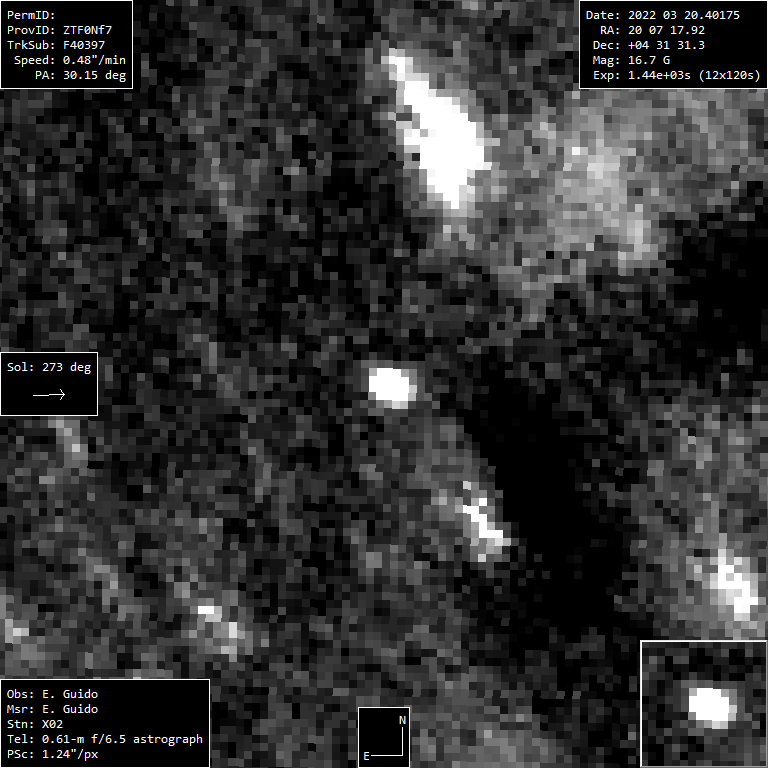
Confirming its cometary nature
Furthermore, newly discovered objects found to be moving go into the Minor Planet Center’s NEO Page. That’s how other astronomers know what to image and hopefully, thereby, to confirm the object. Now, as both professional and amateur astronomers do find the new object, they submit more positions for it to the Minor Planet Center. Then, scientists can determine a preliminary orbit. In this case, it originally looked more like a comet’s orbit than an asteroid’s orbit. That is, the path around the sun was oblong and not circular.
At that point, the object went on the Possible Comet Confirmation Page. Astronomers tried to image it to see if it had a coma or extended atmosphere surrounding the object’s nucleus or core. Why is that important? Basically, it’s important because, virtually, all asteroids – which tend to be rocky or metallic – appear starlike (the name asteroid means “starlike”) from Earth. But an icy comet will form a halo, or coma, around its nucleus as the material on the nucleus heats up when the comet is moving inward toward the sun. Indeed, only several high-magnification images, stacked to increase contrast, will show the coma of a faint comet.
In this case, three teams imaged this new object, and they did find a coma.
Photos of Comet E3
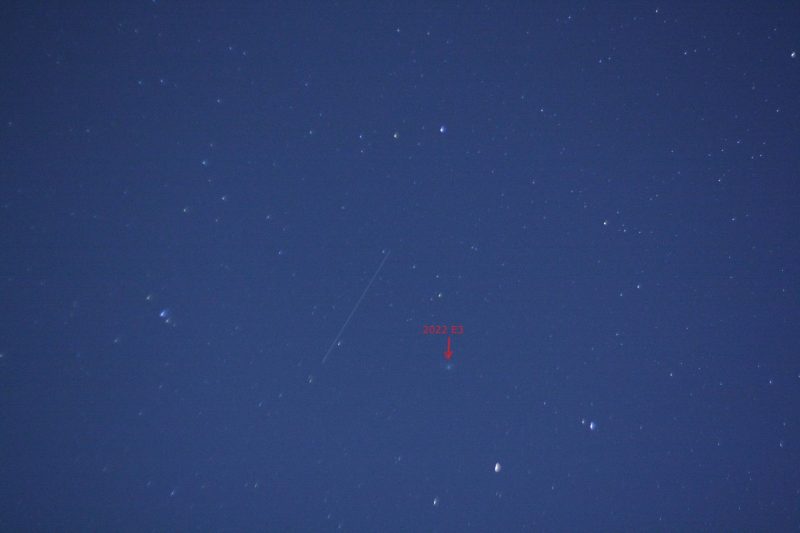
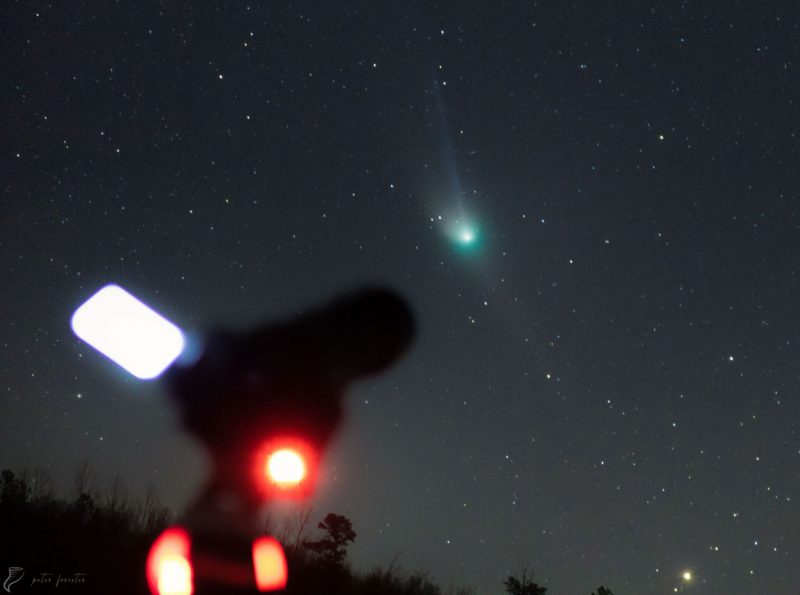
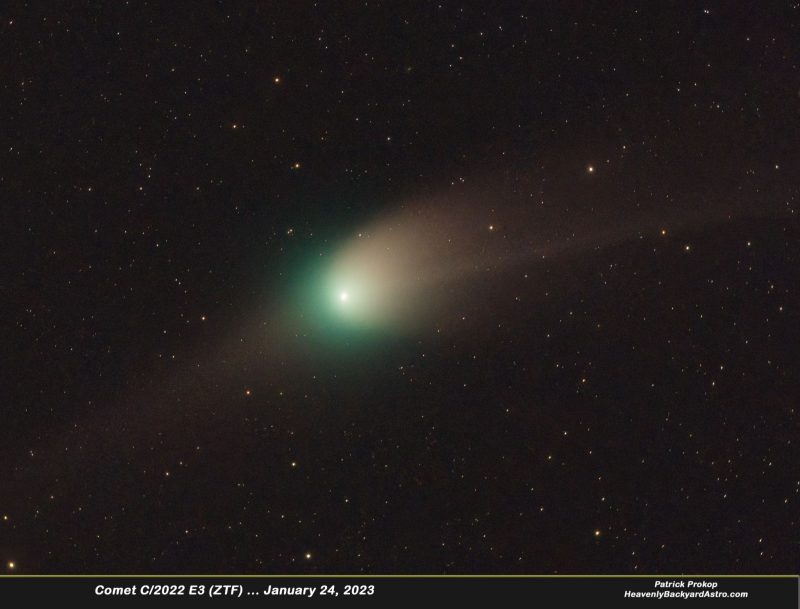
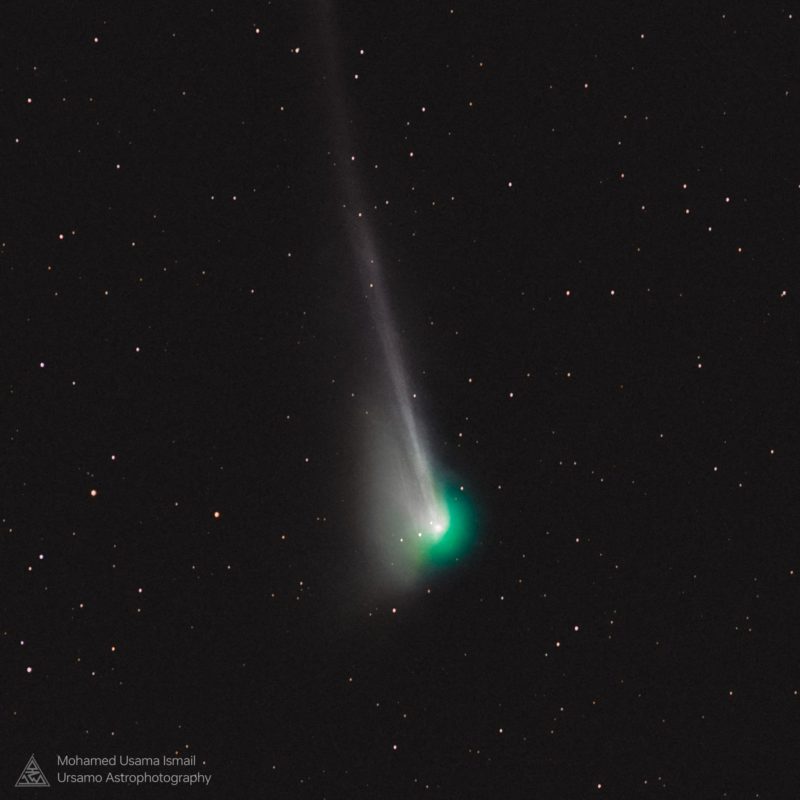
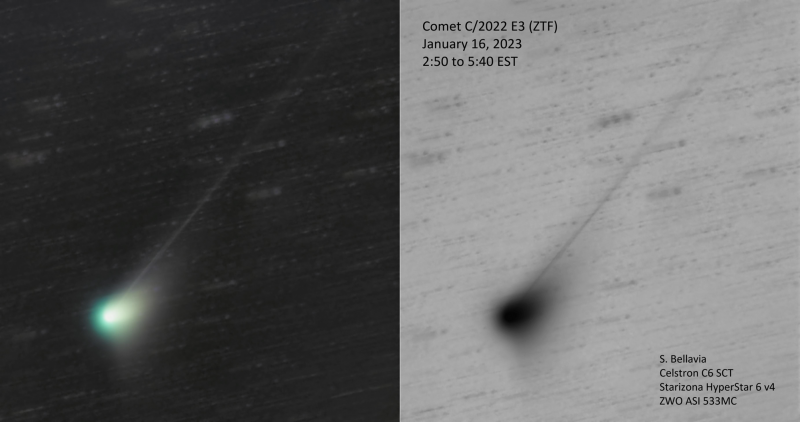
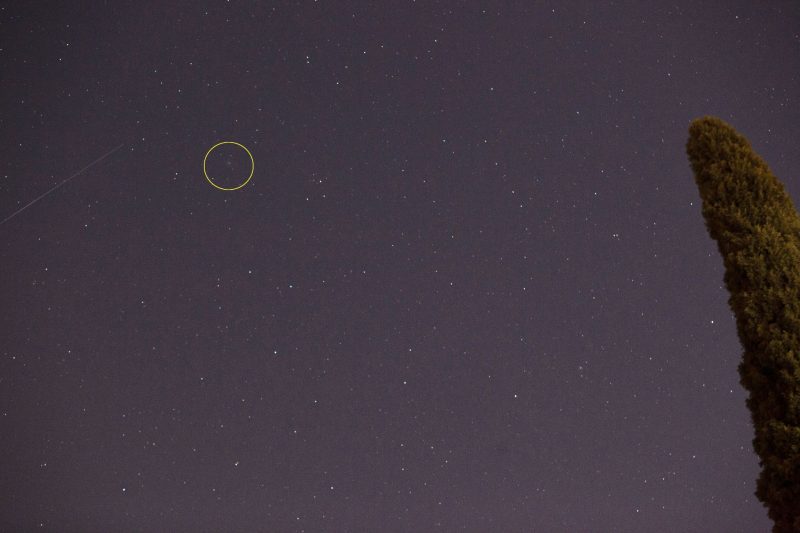
Bottom line: The green comet – Comet 2022 E3 (ZTF) – will pass near the bright star Aldebaran – in mid-February. Here’s how to see them.











